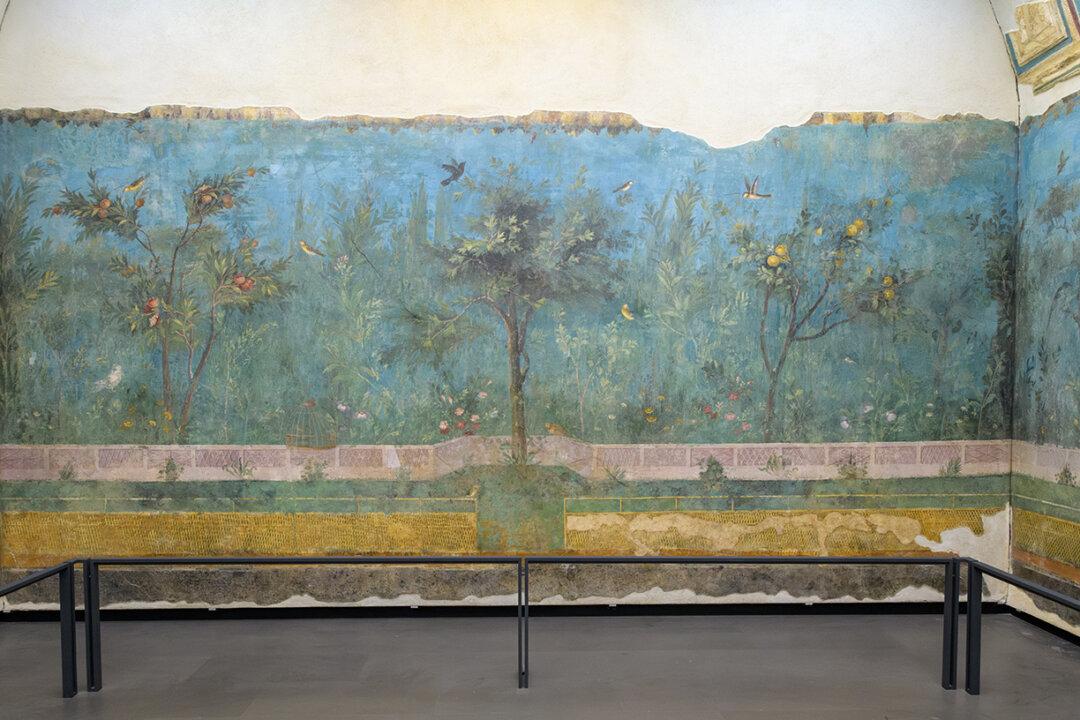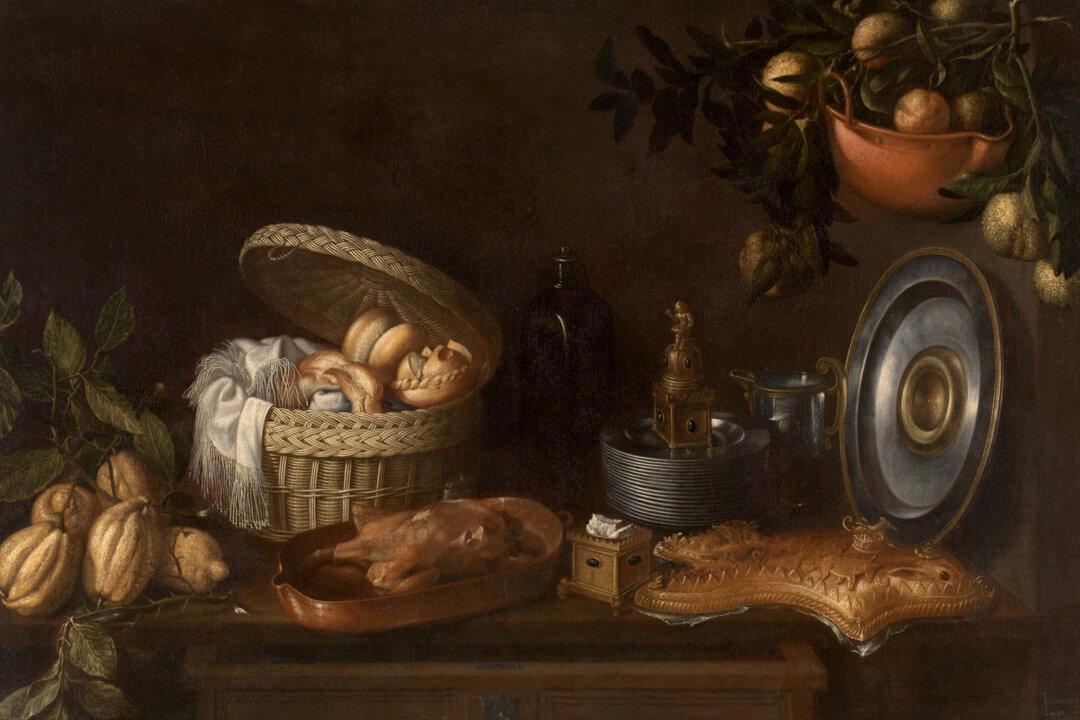Entering the ancient Roman summer triclinium of Empress Livia is like entering a meticulously curated thicket. All four walls are painted with an illusionistic fresco that depicts a wild grove beyond a manicured wicker fence and stone parapet. This balance between chaos and order—untrammeled nature and measured civilization—was the artist’s intent, representing unity between the natural world and the Roman Empire under common rule.
“Gardenscape” (circa 30–20 B.C.) is a wraparound fresco that covered the walls of Empress Livia Drusilla’s subterranean triclinium (dining room) in her Villa at Prima Porta, seven and one half miles north of Rome. At first glance, what appears to be an atmospheric fresco of a garden is replete with symbolism and references to the mythology of Augustan Rome. “Gardenscape” promoted Augustan-era themes such as prosperity, control of nature, and divine order, while also conveying private allusions that would have been exclusively appreciated by the imperial family.
The Roman Dining Experience

Livia’s underground triclinium was 40 feet long by 20 feet wide, with a barrel-vaulted ceiling. The fresco painted in this space was “Gardenscape.” The art created a convincing spatial illusion of an open-air garden within the confines of this subterranean room. It employs a mixture of linear and atmospheric perspective that dissolved the boundaries of the room, blurring the distinction between representation and reality.
Second Style Wall Painting
August Mau, a 19th-century German art historian, created classifications of Roman wall painting by tracing two centuries’ worth of evidence from paintings found in the ancient city of Pompeii. Buried under volcanic ash when Mount Vesuvius erupted in A.D. 79, Pompeian frescoes were preserved in beautiful condition. “Gardenscape” epitomizes the Second Style “picture-window” Pompeian wall painting, which aimed to deceive the observer into thinking that they were looking through a window into a different space.In the foreground of “Gardenscape” runs a wickerwork fence, with central openings at the north and south. Beyond it lies a trimmed footpath, hemmed in on its other side by a stone parapet. Along this footpath, ivy staked with violets, hart’s-tongue fern, and iris are displayed on either side of the niche in the stone partition.

Beyond the stone parapet grows a wild copse of untamed trees, bushes, and flowers, juxtaposed starkly against the neat foreground. The artist strikes a balance of unkempt and cultivated, rendering the background in tonal, atmospheric strokes, creating the illusion of a landscape fading into the distance. This contrasts with the crisp, highly realistic walking path, parapet, and woven fence. A profusion of colorful goldfinches, larks, linnets, and magpies add to the cadence of the composition.
There are six alcoves in the entire composition, each featuring a different tree—oak on the south wall, pine on the north wall, and evergreen spruces on the east and west walls. Each of the three different relief patterns on the parapet—crosshatch, honeycomb, and diamond—corresponds to a genus of tree.

Artistic Allusions
The oak tree centrally depicted on the south wall is a prime example of how “Gardenscape” evokes the mythological and symbolic language of Ancient Rome. Romulus, the founder and first king of Rome, was said by Livy to have built Rome’s first temple—the Temple of Jupiter Feretrius, where “spolia opima” (rich treasure, war spoils) were housed—at the foot of a sacred oak tree on Capitoline Hill.
Restoring the Temple of Jupiter Feretrius and the Temple of Quirinus were two of Augustus’s accomplishments as emperor. Thus, by calling to mind the primeval sacred oak from the founding of Rome, Augustus associated himself with Romulus, the ancient city’s founder, while affirming his new golden age.
The juxtaposition of order and disorder in Livia’s “Gardenscape” is analogous to the structure of the “Ara Pacis Augustae,” or the “Altar of Augustan Peace.” The Roman Senate commissioned it in 13 B.C. to honor Emperor Augustus’s “Pax Romana”—a golden age of peace and stability. Intricate low-relief sculpture covers the monumental marble altar, depicting an imperial procession, mythological scenes from the founding of Rome, and floral motifs.

The “Augustus of Prima Porta” statue was excavated near the doorway of the Garden Room, capturing Augustus standing in contrapposto, with his right hand outstretched and raised in the “adlocutio” pose. In this way, Augustus linked his image with that of an ideal Greek sculpture, such as “Doryphoros.” His decorated military cuirass narrated Augustus’ achievements, connecting him to divine favor and diplomatic success.

Everlasting Peace
Every floral detail in “Gardenscape” holds symbolic significance. The interlacing of violet and ivy simulates the grapevine, a flowering plant beloved by Empress Livia—she attributed her longevity to enjoying the wine of Pizzino daily. Additionally, myrtle, pine, ivy, oak and laurel—every plant needed to create a triumphal crown—are present in the fresco.
All the flora bloom simultaneously: The daisies, iris, roses, wild laurel, poppies, and periwinkles of spring blossom at the same moment as the oleanders of July, the pomegranates and quinces of late autumn, the chrysanthemums of September, and the pine that remains green year-round. “Gardenscape” illustrates the finest beauty of all four seasons, brought together at a single moment in time, commemorating the Augustan Rome as a time of everlasting peace, fertility, prosperity, and victory.







